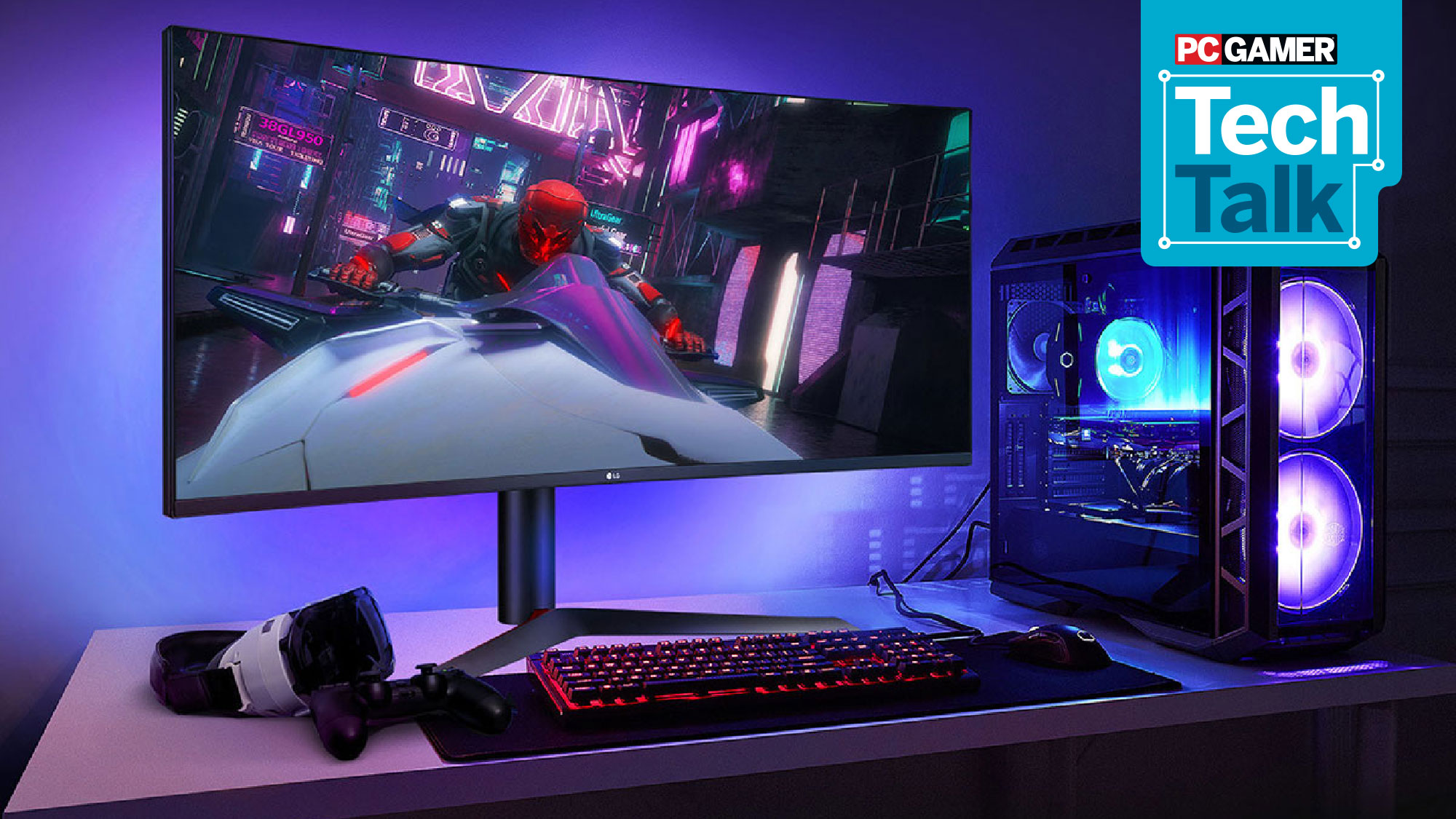Nowadays there are a lot of gadgets whose main purpose is to improve our user’s experience, either for working, doing our chores and especially during our free time. In today’s post, we will talk about monitors, their capacities, their advantages, and how many FPS can hold.
If you are interested in getting a new monitor you should keep reading to learn about all the basics of these devices.
What’s A Monitor?
First, do you know what a monitor is? These are basically the screens we see every day, on our computers and TVs. Monitors display programs, software, and videos and are one of the main pieces in most electronic devices. Everything related to graphics information coming from a connected computer’s video card will be displayed on the monitor thanks to the electronic output they have.
Though the first monitor was first introduced in 1973, meaning 50 years ago monitors used fluorescent screens and cathode ray tubes (CRT), now they are rather built with LEDs, making them way more comfortable and lighter than before. This evolution also has resulted in the monitors having such impressive high-quality capacities that resemble the human eye, but how do they do this? This will depend on a variety of factors, like the frames per second (FPS) they can display and the hertz they have.

What are frames per second?
Now that you know what a monitor is, it makes sense that we talk about what FPS is. Basically, whenever you are watching an image, mainly a video, it is composed of a series of small frames that pass at such a high speed that create a sensation of movement. These frames are consecutive to make sense and create a complete cohesive image, and even though they pass fast, you can capture them in certain moments.
So, FPS can be resumed as how many pictures the monitor can display in a second. Naturally, higher the FPS means more frames that translate into a faster image. Of course, the human brain has a limit of separation of images that can process to still perceive them as individuals, which is 10 to 12 frames, the ideal amount of FPS.
FPS has a direct connection to Hertz (Hz), which is responsible for measuring the refresh rate on the monitor, also known as the number of times the display will refresh itself per second. This can be translated to the number of images it will return in a second, meaning that a 60Hz monitor will return 60 images per second.

How many FPS can a 165hz monitor display?
Now it is time to link all the information that we have been talking about together. if a monitor has 165Hz, this means that it can display 165 frames each second the imaging is showing. This high refresh rate outcomes in a fast smooth image, ideal for gaming.
Who’s usually interested in FPS and Hz?
Anyone who likes technology can be interested in FPS, monitors, and Hz, but gamers have a special curiosity on the matter. When you are playing video games, it is very important to have a high-quality image to be able to enjoy the game correctly, especially if you spend a lot of time gaming or you do it professionally.
Of course, those monitors that have a high FPS and Hz will be more expensive than a regular monitor that could be used to work or watch movies. They imply a big expense, whose worth will depend on your personal interests, how advanced you are in gaming, and the demands on your specific games.
A little bit of history
This next part will be dedicated to curious people who would like to know a little bit about how this type of technology has been changing over the years and how it was adapted to different types of entertainment.
Silent films
Silent movies were the beginning of cinema, they were black and white, really short, and as the name says, no dialogue between the characters. If you have watched one of these films before, you may have noticed that they are a little bit jerky, and this is directly related to the FPS that was used at the time.
At that time, we are talking early 1920s, silent films had a range of 16 to 24 FPS, it was constantly changing because the cameras were hand-cranked. They mainly based the FPS on the scene that they were filming, but it was also altered when it was screened in the cinema because projectionists used to change the frame rate using a rheostat that controlled the voltage powering that was being used in the projector.
Along with the changing FPS, the refresh rate was usually between 48 to 72 Hz, which reduced considerably eye strain. Thomas Edison had discovered that anything 46 FPS would be difficult to perceive as motion and that as it lows it will strain the eye. Later in the mid-1920s, the FPS improved and started to be between 20 and 26 FPS, and the image became a little bit smoother.
Sound films
As for the sound films, which started to become popular in 1926, the image had to change because the hearing was now part of the equation. These films introduced dialogue and music that had to be synced to what was happening in the image and using another sense made the experience more sensitive to changes, including the speed of the frames.
Since the silent films were being displayed at no more than 26 FPS, the industry decided that sound films required an FPS of at least 24, which in the next decade became the rate among companies. This FPS accompanied movies that used a standard sound film of 35 mm.
Lastly, the projector would use a two-blade shutter system to display 48 FPS since the film traveled at a rate of about 456 mm, or 18 inches each second, and altogether created an image that was just in the threshold to project an image that was perceived as a movement by the human eye. Nowadays, this still persists in 35 mm film modern projectors, but they use three blades instead that end up shuttering 72 FPS. If there are two blades, each frame will be projected two times, and so on.
Animation
If you picture old animated cartoons in your head, you may remember how they are a little bit odd when it comes to the movement of the characters. This jerky picture is the result of the FPS as we already talked about. Cartoons used to be drawn by hand, meaning that each frame is a separate individual drawing that was put all together to create the actual motion image.
But there is something catchy about animation because each drawing was shot “on twos”, which basically means that every drawing is shown on two frames of film. This would happen on most occasions, except when the scene was showing a quick movement, in this case, they would stick to the regular one drawing per frame.
Both techniques, “on twos”, and “on ones” combined were used not only because it was a way to keep the human eye fooled, but also implied a saving on the costs of the production of so-called cartoons. Later, they started to use “on threes” and “on fours” being even cheaper than the previous methods, resulting in 8 or 6 pictures per frame.
Modern video standards
There were a lot of factors that required more adjustments in the standard FPS, one being the introduction of color and the other the different frequency of electric grids across the world. Most of the world uses 50 Hz but in South Korea, Japan, the US, and Canada the frequency changes to 60Hz.
As for the colored television, they had to lower the FPS by 0.1%, but why? At first, the saturation of these TVs was very high, resulting in the appearance of the “dot crawl” on the screen. This dot crawl was a display artifact that was used on the previous black and white TV, but it could be managed by lowering the FPS.
As of today, many devices can display old FPS, and of course, higher frequencies up to 300 frames per second. They have different mechanisms to avoid uneven motion or that go so fast that we don’t have enough time to process it.
Final Lines on How many FPS can a 165hz monitor display?
It is amazing how technology has advanced so much in the last couple of decades that we have more and more options to enjoy our free time and that allows us to improve our experiences.
The comfort of technology in our times offers us more and more options in an exponential way. New alternatives are quickly updated and created to improve the user’s experience.
Therefore, it is necessary and useful for us to know how to be good consumers to maximize our experiences. Our needs and budget determine factors to understand what to consume in technology and prioritize quality.
More Posts for You: